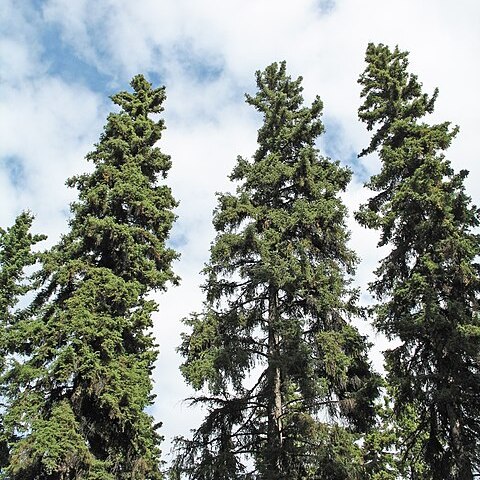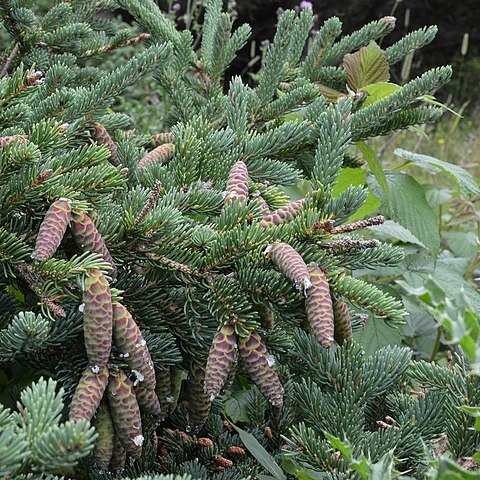Trees to 30m; trunk to diam.; crown broadly conic to spirelike. Bark gray-brown. Branches slightly drooping; twigs not pendent, rather slender, pinkish brown, glabrous. Buds orange-brown, 3--6mm, apex rounded. Leaves (0.8--)1.5--2(--2.5)cm, 4-angled in cross section, rigid, blue-green, bearing stomates on all surfaces, apex sharp-pointed. Seed cones 2.5--6(--8)cm; scales fan-shaped, broadest near rounded apex, 10--16 ´ 9--13mm, flexuous, margin at apex ± entire, apex extending 0.5-- beyond seed-wing impression. 2 n =24.
Tree to 25 m, the crown slender but not notably spire-like; twigs glabrous; lvs 8–18 mm, markedly glaucous, especially when young; winter buds obtuse, with obtuse, glabrous scales; cones ellipsoid to short-cylindric, 3.5–5 cm, deciduous, pale brown, the scales thin and flexible at the entire margin. Mostly in rich, moist soil; Nf. and Lab. to Alas., s. to n. N.Y., Mich., Minn., S.D., and B.C.



